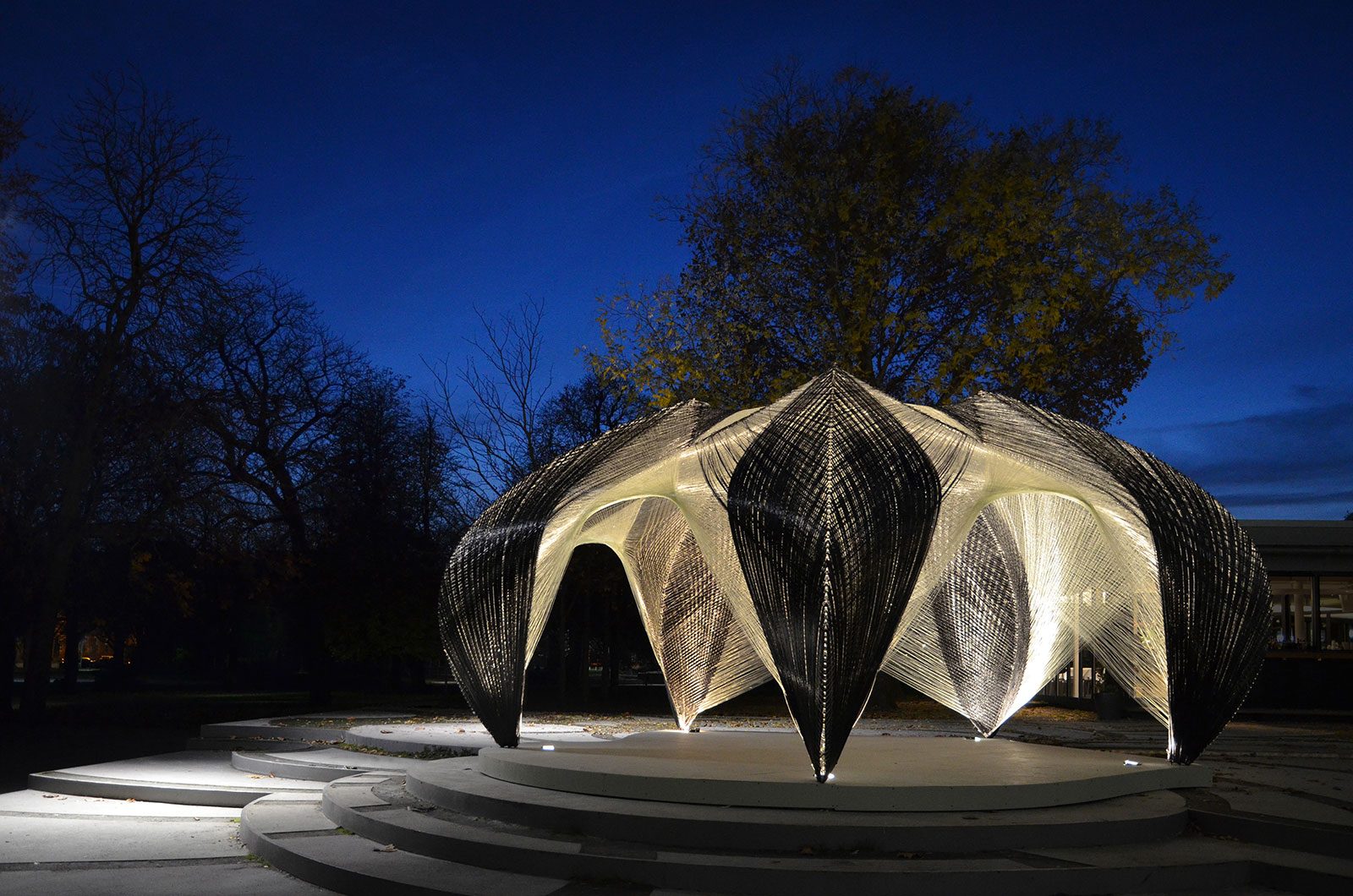Presse
Pressemitteilung Nr. 1 | 16.05.2014
DFG fördert Sonderforschungsbereich für Architektur und Bionik
Die Deutsche Forschungsgemeinschaft (DFG) hat in ihrer Sitzung am 15. Mai die Förderung des transregionalen Sonderforschungsbereiches TRR 141 ‘Biological Design and Integrative Structures’ mit 9,3 Millionen Euro für vier Jahre beschlossen. Das Programm beschäftigt sich mit der Analyse und Simulation von Entwurfs- und Konstruktionsprinzipien der Natur und entwickelt Strategien für ihre Anwendung in der Architektur.
Aktuelle Entwicklungen der computerbasierten Modellierung, Simulation und Fertigung eröffnen neue Möglichkeiten, natürliche Strukturen genauer zu analysieren und ihre Bildungsprinzipien auf die Makro-Ebene der Baukonstruktion und anderer Bereiche der Technik zu übertragen. Ziel ist dabei nicht nur, die Leistungsfähigkeit technischer Konstruktionen zu verbessern, sondern auch die inhärenten ökologischen Eigenschaften natürlicher Strukturen, vor allem ihre effektive Nutzung beschränkter Ressourcen und ihre geschlossenen Stoffkreisläufe, in Architektur und Technik zu übertragen.
Der Transregio 141 eröffnet einen neuen Zugang zum Entwerfen und Konstruieren in der Architektur. „Unser Ziel sind multifunktionale, anpassungsfähige und gleichzeitig ökologisch effiziente Strukturen, die die Grenzen herkömmlicher Baukonstruktionen weit hinter sich lassen“, so der Sprecher, Prof. Jan Knippers vom Institut für Tragkonstruktionen und Konstruktives Entwerfen (ITKE) der Universität Stuttgart.
Das Forschungsprogramm ist als Dialog konzipiert: Ein interdisziplinäres Team von Architekten und Ingenieuren der Universität Stuttgart, Biologen und Physikern der Universität Freiburg sowie Geowissenschaftlern und Evolutionsbiologen der Universität Tübingen untersucht die fein differenzierten, vielfach vernetzten und hierarchisch strukturierten Eigenschaften biologischer Strukturen und entwickelt Strategien, diese in die Architektur zu übertragen. Das Ergebnis dieses Prozesses regt wiederum weitere
Grundlagenforschung in der Biologie an. Übergeordnetes Ziel des Forschungsprogrammes ist es, einen Beitrag zur Etablierung der Bionik als wissenschaftliche Methodik zu leisten und sie im architektonischen und konstruktiven Entwurfsprozess zu verankern.
Der TRR 141 ist seit vielen Jahren der erste Sonderforschungsbereich der DFG aus dem Bereich der Architektur.
Weitere Informationen:
Universität Stuttgart
Institut für Tragkonstruktionen und Konstruktives Entwerfen (ITKE)
Dipl.-Ing. Kristina Hajek
Tel.: +49 (0) 711 685-827 63
E-Mail: k.hajek@itke.uni-stuttgart.de
 Forschungspavillion aus robotisch gewickelten Carbon- bzw. Glasfasern
Forschungspavillion aus robotisch gewickelten Carbon- bzw. Glasfasern
(Foto: ICD/ITKE)
Press release No. 1 | 16.05.2014
DFG Funds Research Centre for Architecture and Biomimetics
The DFG (German Research Foundation) decided on May 15th to support the transregional Collaborative Research Centre TRR 141 ‘Biological Design and Integrative Structures’ with a grant of 9.3 million Euro for four years. The initiative focuses on the analysis and abstraction of design and construction principles in nature and their implementation in architecture.
Recent developments in computational design, simulation and fabrication offer new options for analysing natural constructions and for transferring their principles to the macro-scale of building construction and other fields of technology. The aim of the Centre is not only to increase performance, but also to transfer the inherent ecological properties of natural structures, i.e. mainly the effective usage of limited resources and closed material cycles, to architecture and building technologies.
Jan Knippers, Professor at the Institute of Building Structures and Structural design (ITKE) of the University of Stuttgart and spokesperson of the program, says: ‘TRR 141 offers a new approach for design and construction in architecture and might direct us to multifunctional and adaptive structures far beyond existing typologies of building construction.’
The entire program of TRR 141 is conceptualized as a dialogue: An interdisciplinary team of architects and engineers from the University of Stuttgart, biologists and physicists of the University of Freiburg and geo- scientists and evolutionary biologists of the University of Tübingen will analyse and simulate multi-layered, hierarchically structured and finely tuned types of morphology taken from natural structures and develop strategies for implementing them in architecture. The results will provide the foundations for further investigations and a more detailed understanding of the studied biological systems. At a higher level, the project aims to contribute to the conceptualization and foundation of biomimetics as a scientific methodology in the context of architecture and building technologies.
TRR 141 is the first Collaborative Research Centre funded by the DFG in the field of architecture for many years.
Media contact:
Universität Stuttgart
Institut für Tragkonstruktionen und Konstruktives Entwerfen (ITKE)
Dipl.-Ing. Kristina Hajek
Tel.: +49 (0) 711 685-827 63
E-Mail: k.hajek@itke.uni-stuttgart.de
 Research pavillion, entirely robotically fabricated from carbon and glass fibre (Foto: ICD/ITKE)
Research pavillion, entirely robotically fabricated from carbon and glass fibre (Foto: ICD/ITKE)

